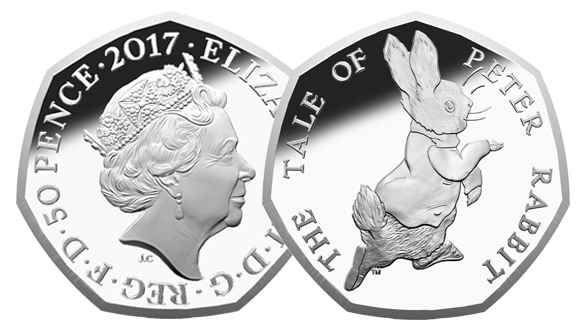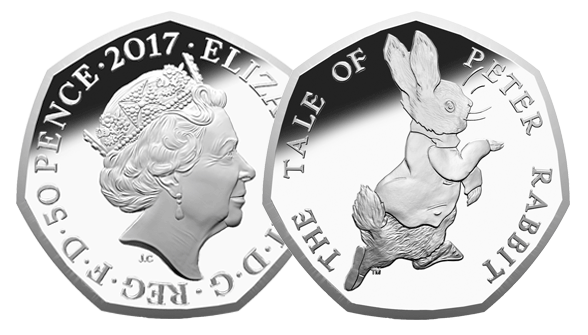Posts Tagged ‘numismatics’
200 years of the Sovereign. The UK’s First Ever Gold Proof Piedfort Sovereign.
Update, 27th June: It has now been confirmed that the Gold Proof Piedfort Sovereign has completely SOLD OUT at the Mint, in just 24 HOURS. It’s still available at The Westminster Collection, click here >>
2017 marks the bicentenary of the ‘modern’ Gold Sovereign – the most important numismatic anniversary for decades. To mark this occasion a number of special limited edition Gold Sovereigns have been released, including what might be the most important gold sovereign of them all – the first ever Gold Proof Piedfort Sovereign.
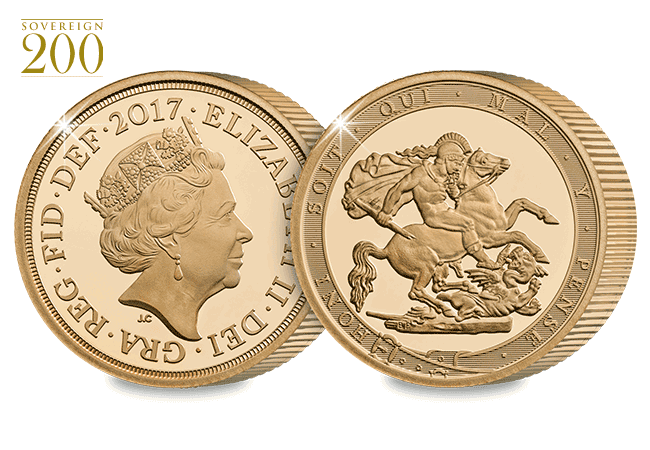
The Gold Sovereign is undoubtedly the United Kingdom’s most famous gold coin, and has been struck from 22 Carat Gold to the exact same specification since 1817.
To mark the 200th anniversary of the ‘modern’ Gold Sovereign, The Royal Mint has created a milestone in numismatic history by issuing the first ever Piedfort Sovereign.
Piedfort coins are some of the finest examples of British craftsmanship and the Gold Proof Piedfort Sovereign is no exception.
Prestigious reputation
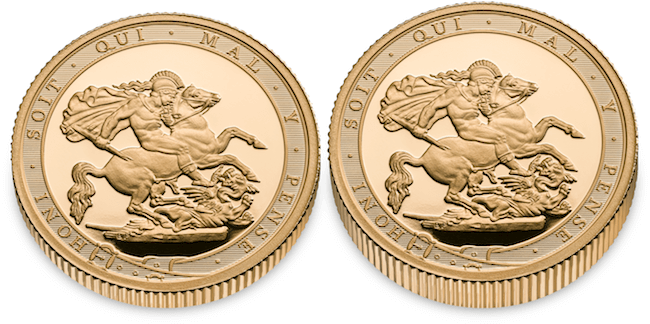
You can really see the difference in thickness of the Piedfort when compared to the standard issue.
The very first Piedfort can be traced back to the 12th century. First minted in France, the name directly translates to ‘heavy measure’. The striking of Piedfort coins began later in England, however examples are known to date back to the reign of Edward I.
Piedforts were considered prestige pieces and ownership was often used as a means to signify a person’s wealth and power.

Today, Piedforts continue to be limited issues and striking of such pieces is reserved strictly for the most important events. Therefore, it seems fitting the UK’s first Piedfort Sovereign has been struck to mark 200 years of the Sovereign.
From today, for the first time ever, collectors will be able to own the Piedfort Gold Sovereign and with an edition limit of just 3,500, this new release is sure to be one that will be treasured in years to come.
You can now own the First Ever Gold Proof Piedfort Sovereign, but with such a tiny edition limit, they won’t be available for long. Sign up below if you’d like to be contacted about owning this UK first:
New Peter Rabbit coin breaks the internet – Silver Proof 50p sells out in HOURS

The record-breaking 2017 Peter Rabbit UK Silver 50p Coin
Britain showed itself as a nation of nostalgic coin lovers as the release of the new Peter Rabbit Silver Proof 50p brought the numismatic net to a standstill.
At one point The Royal Mint had over 50,000 people in a queue to access its website and The Westminster Collection also saw record traffic – with all hands on deck to keep the servers running.
All available Peter Rabbit coins were sold out before the newspapers even ran a story – and collectors who got in early were left feeling like they won the lottery.
30,000 coins gone in just a few hours
The pandemonium echoed the release of the 2016 Peter Rabbit 50p, which also caused a collecting frenzy but was limited to 15,000 coins. This year’s issue has an edition limit of 30,000 but the demand was also amplified.
The coin was fully allocated across the board by 4pm, but the queues were still long as collectors changed their focus to the Brilliant Uncirculated editions of the coin. Savvy buyers were desperate to bag what will go down in history as one of the UK’s most sought-after coins.
Beatrix Potter coins are big news

Fully allocated across the board by 4pm on its day of issue
The lucky few that secured the 2016 coin for £55 now own a coin that changes hands for up to £400 on Ebay. This year’s coin has already started appearing in auctions, and whatever happens it looks like the £60 retail price will turn out to be a bargain.
Undoubtedly a few speculators got in there but with demand so high it was literally first come, first served – leveling the playing field and making getting a coin a real achievement for anyone.
Did you manage to secure a 2017 Peter Rabbit Silver Proof 50p? If you were one of the lucky ones, let us know in the comments!
We still have stock of the collector edition Certified Brilliant Uncirculated 2017 Peter Rabbit 50p available. Click here now to secure yours – you will also have the chance to pre-order the other three coins in the series.
Meet the FOUR new Beatrix Potter 50p coins…
Four new Beatrix Potter 50p silver coins have been revealed by The Royal Mint. Benjamin Bunny, Mr. Jeremy Fisher, and Tom Kitten all feature for the first time on UK coinage – whilst Peter Rabbit scampers back onto our currency for the second year in a row.

The four coins issued in 2016 created a collecting frenzy, crashing The Royal Mint’s website and selling out within days. And these new character coins are just as cute, just as evocative, and importantly – just as collectable.
Here’s a first look at the new silver coins, with details of when they are available…

The 2017 Peter Rabbit UK Silver 50p Coin
2017 Peter Rabbit 50p
Everyone’s favourite mischievous bunny is back – pictured in a familiar pose dashing away… presumably from Mr McGregor’s garden.
Probably Beatrix Potter’s most familiar character, the coin is bound to be sought-after.
Last year’s Silver Proof Peter Rabbit coloured coin now changes hands on Ebay for up to £400, underlining its collectability.

The 2017 Jeremy Fisher UK Silver 50p Coin
2017 Mr. Jeremy Fisher 50p
This silver 50p, due to be released in June, pictures the unlucky frog Mr. Jeremy Fisher – who only wanted to catch some fish for dinner for his friends but ends up almost being eaten by a trout.
Each of the Silver Proof editions is limited to just 30,000 coins. Given the level of demand for last year’s series this may well not be enough for everyone that wants one.
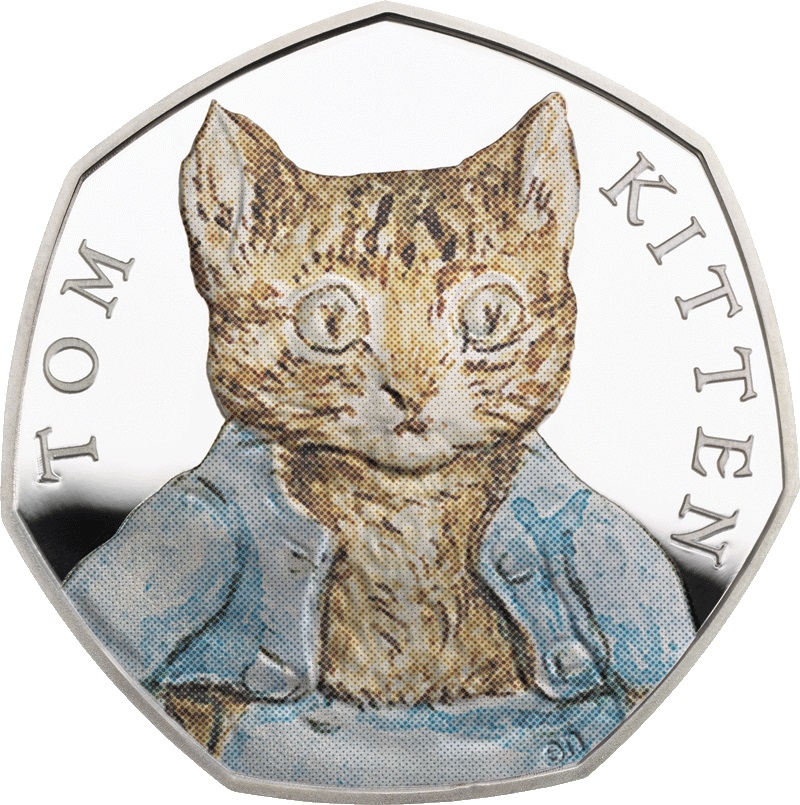
The 2017 Tom Kitten UK Silver 50p Coin
2017 Tom Kitten 50p
Available late July, the Tom Kitten Silver 50p features the original illustration from the front cover of Beatrix Potter’s book. The naughty kitten appeals to children everywhere with his antics and is another favourite character from the series.
All four coins have been struck to a fine ‘proof finish.’ It really brings the designs to life – and is often referred to as ‘the collector’s favourite’ due the high level of craftmanship required to achieve the result.

The 2017 Benajmin Bunny UK Silver 50p Coin
2017 Benjamin Bunny 50p
The last coin to be made available (slated for September) introduces another of the Rabbit family. Benjamin Bunny is Peter’s Cousin and leads him on another jaunt into Mr. McGregor’s garden. The illustration featured on the coin is taken from the original front cover.
I’m sure you’ll agree, these four coins are the perfect continuation of the series, and really capture the nostalgic charm of Beatrix Potter’s original stories.
But if there’s one lesson you can take from last year, make sure you get yours early – before they sell out!

